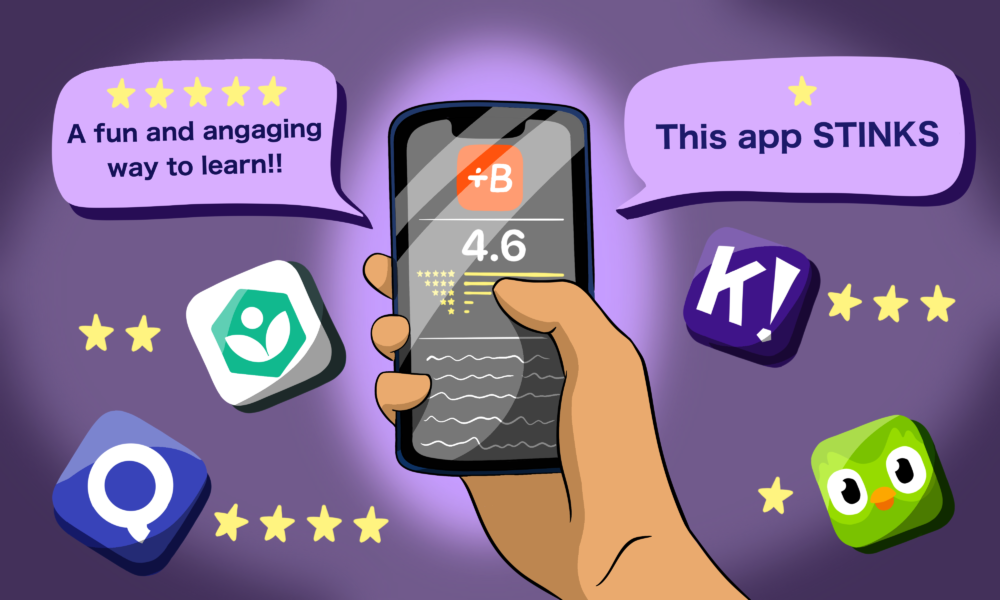Over 400,000 educational apps are currently available in app stores, with some of the most popular being Kahoot, Duolingo, and Quizlet—all instantly recognizable to anyone who attended high school after 2010. While these apps can be useful tools for teachers, they vary widely in quality and effectiveness.
In a recent study, Emma Liptrot, a PhD student in McGill’s Department of Educational and Counselling Psychology, and her team endeavoured to understand the factors influencing educators’ selection of educational apps.
Liptrot first outlined the five basic educational benchmarks her team developed for high-quality apps.
“If an app is high-quality, it should follow some sort of specific curriculum; provide feedback to students if they make a mistake; include some sort of support to guide students; be developed by a team that includes experts in education, like teachers or researchers; and be based on some sort of learning theory,” Liptrot said in an interview with The Tribune.
Educators were generally more likely to download apps whose written descriptions mentioned these educational benchmarks compared to those mentioning buzzwords like engaging, interactive, hands-on, personalized, and multimedia. They were also willing to pay more for the former ones and give them a higher rating.
Although how well an app meets these educational standards did matter in educators’ choices, researchers found that educators were more likely to be affected by user ratings and app store rankings.
“The study found that high user ratings strongly impact educators’ app choices more than educational benchmarks. Educators’ decisions are influenced by benchmarks only if the app has a neutral rating, not if it has a high or low rating,” Liptrot said.
One possible explanation is that educators rely primarily on user ratings but look for benchmarks when ratings are ambiguous.
According to Liptrot’s study, educators said they would download apps that mentioned educational benchmarks 57 per cent of the time, compared to buzzwords 49 per cent of the time, whereas they would download apps with positive ratings 90 per cent of the time, compared to negative ratings 13 per cent of the time.
In general, educators strongly preferred apps with positive ratings: They were more likely to download them, pay more for them, and rate them positively.
Moreover, Liptrot highlighted that ratings are not always a reliable source of information about the educational quality of a given app.
“You would expect an app that has a five-star user rating to be a high-quality educational app, but the problem is that there are many different things that can go into why an app receives five stars, and anyone can rate an app five stars. Children could rate the app five stars if they think the app is fun. Parents could rate the app five stars if their child really seems to enjoy using it,” Liptrot explained. “Previous research has actually found that user ratings are not associated with the quality of an educational app.”
Educators are ultimately responsible for providing opportunities for meaningful learning within a school environment, so they need to be more discriminating with positively rated apps.
The app’s ranking in the app store also had a significant impact on educators’ decisions to download, pay for, and rate an app.
“We expected that educators would prefer top-ranking apps, but our study actually found the opposite, that educators preferred apps ranked toward the bottom of the education charts,” Liptrot said.
According to Liptrot, a likely reason for this observation could be that educators misunderstood ranking, interpreting higher numbers as a “good” ranking when, in fact, “top” apps have rankings closer to one. This confusion may have been more common in the study because participants were shown individual app pages, rather than scrolling through apps from first-ranked to last as they would appear in the app store.
Moving forward, Liptrot points to a need for companies running app stores to improve their user ratings and ranking systems to facilitate the selection of high-quality educational apps.
“The next step in the research would involve asking educators which apps they implement in classrooms, how they choose them, and evaluating the quality of these apps,” Liptrot said.









